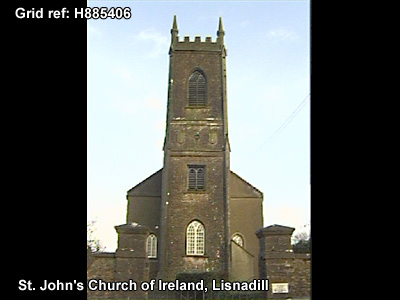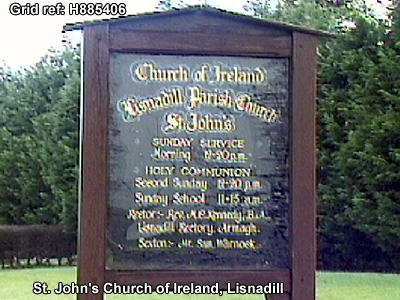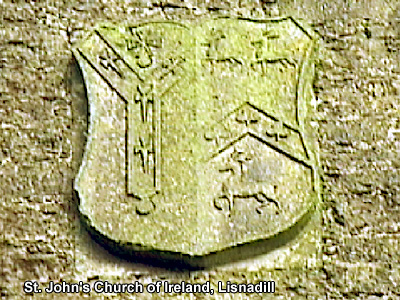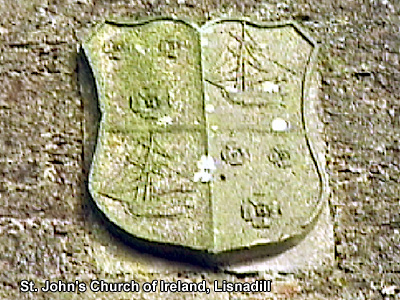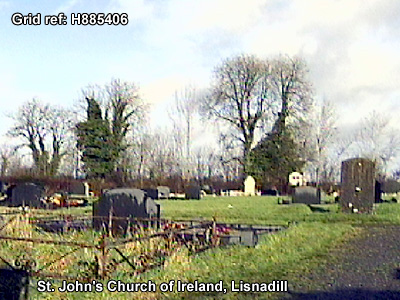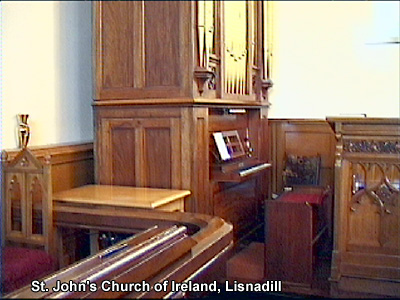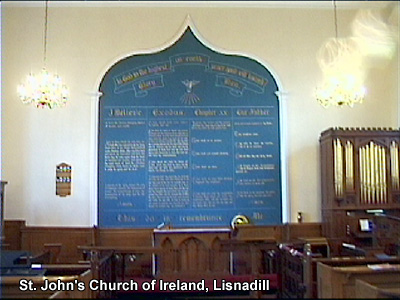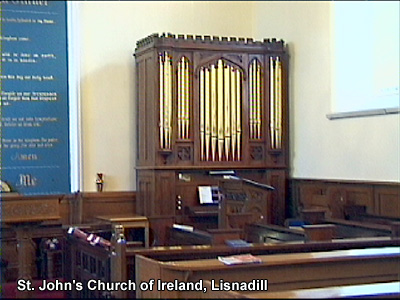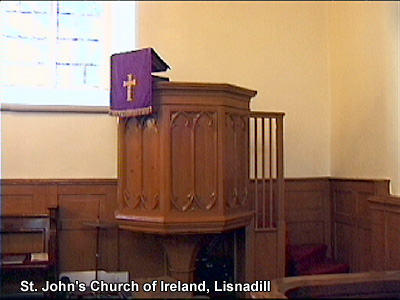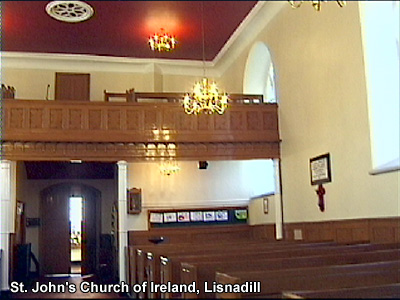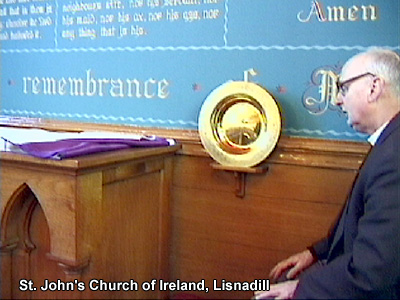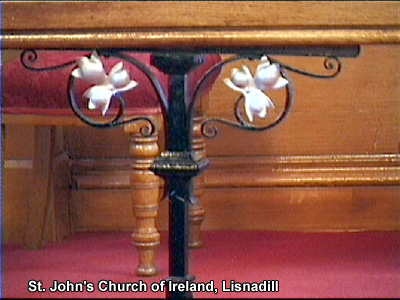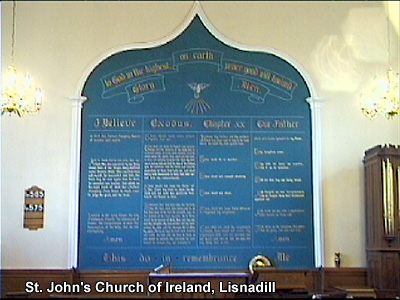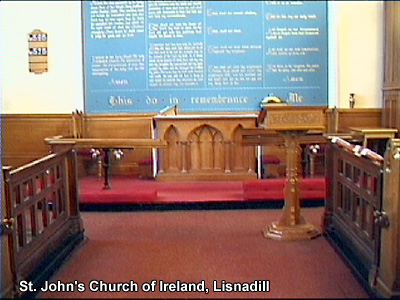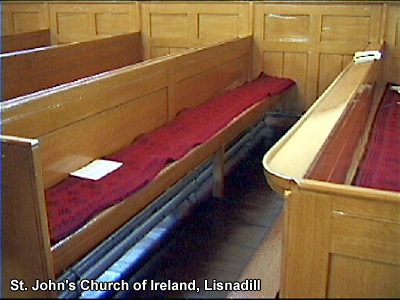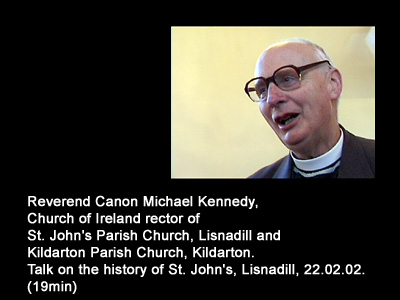
Lisnadill was formed as a Perpetual Curacy in 1772 when 43 townlands were disunited from the Parish of Armagh. The name Lisnadill simply means 'Ringfort of the blind'. The ancient Church was destroyed during the violence of 1641 and not rebuilt. The present Church was built and dedicated in 1772. The Lewis Topographical Dictionary of 1837 states, "The Church is a spacious edifice in the later English style, with a square embattled tower erected by Primate Robinson in 1772 and has the arms of the founder over the entrance".
The architect Thomas Cooley, who also designed the Royal Exchange in Dublin, designed the church building at Lisnadill. The original plans of the church are in the care of the Robinson Library in Armagh. Cooley was employed at various instances by Archbishop Robinson to design the Archiepiscopal Palace, Library and the Royal School in Armagh. The church at Lisnadill was consecrated in 1772 having been completed in a style, "truly characteristic of their noble founder". In fact, Cooley designed a portfolio of churches allowing the Archbishop to match a church with a location. One common feature of these churches is that they are all built on hills.
Inside the church is a hall divided into three bays with a four-storey tower at the west end, bearing the coat of arms of the Primate of Armagh. The top of the tower is crowned by battlements and four corner pinnacles.
A wide central aisle is lined with box pews, providing a symmetrical aspect to the interior. The pulpit is not an original but appears to be a reworking of the original design. The octagonal wooden structure with gothic motifs rests on a concave pedestal with mouldings at both top and bottom. The original pulpit was mounted higher up than the present one and was covered with a type of canopy enhancing the power of the minister's voice. The canopy was removed during the time of the Rev.Henry Lamb.
Behind the communion rail is a fine reredos, scripted with the Creed, Ten Commandments and the Lord's Prayer. It is framed by two half columns lending support to an ogee arch, within which is painted the dove of the Holy Spirit. The Creed and Lord's Prayer were originally engraved on metal tablets but these corroded. In the 1960's these expressions of faith were painted directly onto the wall by local sign-writer Campbell Reaney.
The paten and chalice were presented by Archbishop Robinson in 1777 and are still used in the church today.
The organ was built in 1842 by Joseph Walker and is noted for its fine pipework. The original plans of the organ still remain in the care of the Walker Organ Company. It was in fact built, at a cost of £105, for the private residence of the Reverend James Jones, Rector of Kilmore. It was moved to the Church at Kilmore in 1855 and in the early 1930's was purchased by the church at Lisnadill for £30. At first it was erected in the gallery but was subsequently moved to the southeast corner of the church. The organ is a replica of an eighteenth century chamber organ and can be dismantled into numerous small parts, allowing for ease of relocation. Initially the organ was designed to be hand-pumped but this was a tiresome exercise and an electric pump was eventually fitted. The organ is considered to be a fine article of handcraft but it does not carry a full compliment of notes and therefore requires some ingenuity on the part of the organist.
The church recently underwent major renovations and redecoration. Despite this the church retains its original eighteenth century character. One modern addition has been the choice of colour for the ceiling. The dark red shade not only adds colour to the building but casts a glow about the church, echoing the warmth and welcome of its minister. The congregation is currently raising funds with which they hope to restore the tower and facade of the church.
The Rectory of Lisnadill Parish was constructed in 1776 and has been used continuously by the various ministers of the church. Despite the varying characters of the occupants the house has retained an eighteenth century feel. The attached twenty-five acres of land provide tranquillity for the minister and his family.
LIST OF CLERGY
In the accompanying recording, the Reverend Kennedy describes St. John's Parish Church, Lisnadill.

Use the audio controller to listen to this talk, given in 2003.

